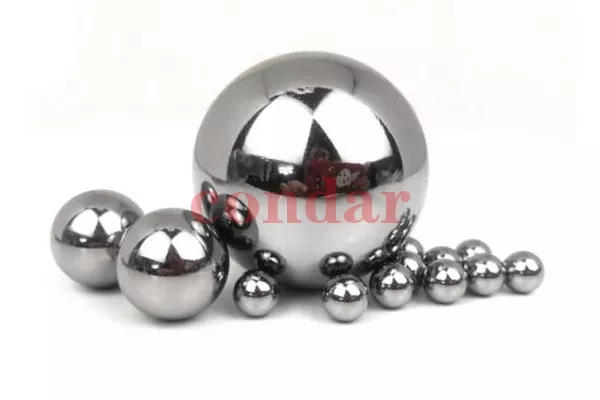Why G10 420C Stainless Steel Balls Are Critical in High-Precision Applications
2025-02-22
When you think of high-precision machinery or advanced engineering systems, it’s easy to overlook the small components that make these systems function seamlessly. One such crucial component is the G10 420C stainless steel ball. Despite their small size, these stainless steel balls are integral to the performance and longevity of many critical devices. In this blog, we’ll explore why these stainless steel balls are essential in precision applications and the industries that rely on them.
What is G10 420C Stainless Steel?
The term G10 420C refers to a grade of martensitic stainless steel known for its excellent hardness, wear resistance, and the ability to retain its mechanical properties under stress. The “C” designation indicates that this alloy has a higher carbon content than standard 420 stainless steel, which improves its ability to achieve higher hardness levels after heat treatment. This makes G10 420C stainless steel balls the ideal choice for high-precision applications that demand durability and reliability.
Why G10 420C Stainless Steel Balls Are Ideal for Precision Engineering
1. Superior Hardness and Wear Resistance
G10 420C stainless steel balls are well-known for their high hardness after heat treatment. This hardness is crucial for minimizing wear and tear in machinery that requires smooth, reliable operation over time. In ball bearings, for example, the G10 420C steel balls help reduce friction between moving parts, ensuring that the system functions efficiently without significant degradation or failure. The high hardness ensures that these balls can withstand the forces placed upon them without deforming, providing long-lasting performance.
2. Excellent Performance Under Pressure
Many high-precision applications involve high pressures and harsh operating environments, where materials are exposed to extreme conditions. G10 420C stainless steel balls excel in these settings, offering robust performance even when exposed to pressure, friction, and high temperatures. They can endure intense conditions in bearings and actuators, where constant motion and stress are the norm. Their resilience makes them an essential part of machinery in industries like aerospace, automotive, and industrial manufacturing.
3. Corrosion and Oxidation Resistance
While G10 420C stainless steel is not as corrosion-resistant as higher-grade alloys like 316 stainless steel, it does offer moderate resistance to rust, oxidation, and environmental wear. This is especially important in applications where the balls are exposed to moisture, chemicals, or other harsh environmental factors. For example, in the medical industry, surgical equipment and prosthetic joints often use stainless steel balls due to their resistance to corrosion and the need for hygiene and reliability.
4. Versatility Across Industries
The versatility of G10 420C stainless steel balls makes them suitable for a wide variety of applications. Here are some key industries that rely on these precision components:
- Aerospace: In aerospace engineering, G10 420C stainless steel balls are used in actuators, control systems, and valve mechanisms where precision and durability are critical.
- Automotive: These balls are employed in steering systems, brake mechanisms, and transmission systems to ensure smooth, reliable performance.
- Medical: In medical devices such as prosthetics, surgical tools, and medical robots, the precise nature of these stainless steel balls ensures they meet stringent standards of reliability and accuracy.
- Industrial Manufacturing: In industrial applications, these stainless steel balls are used in machine tools, valves, and jigs, where their wear resistance and precision are crucial for maintaining efficiency and uptime.
The Manufacturing Process of G10 420C Stainless Steel Balls
To achieve the desired properties, G10 420C stainless steel balls go through a meticulous manufacturing process. Here’s an overview of the
steps involved:
1. Material Selection: The raw 420C stainless steel material is chosen for its carbon content and ability to be heat-treated for hardness.
2. Precision Shaping: The stainless steel is spherically shaped using high-precision machinery to ensure the correct size and smoothness.
3. Heat Treatment: The balls undergo heat treatment to enhance their hardness, achieving a Rockwell hardness of 58-62 for maximum durability.
4. Polishing and Finishing: After heat treatment, the balls are polished to a smooth finish, ensuring minimal friction and smooth operation in applications like bearings.
G10 420C stainless steel balls are indispensable components in the world of precision engineering. With their high hardness, corrosion resistance, and versatility, they play a critical role in ensuring the reliability and performance of machinery and systems across a range of industries. Whether in automotive, aerospace, or medical devices, these stainless steel balls provide the durability and precision necessary for high-performance operations.
If you're looking for a precision component that combines strength with reliability, G10 420C stainless steel balls are the way to go. Their exceptional mechanical properties make them the perfect solution for demanding applications requiring both performance and longevity.



